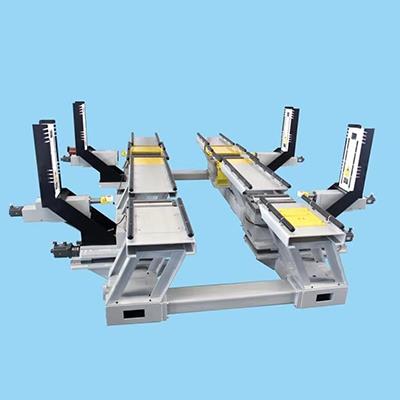The statistics given in the car manual are the same as those shown on the dynamic wheel alignment computer, which means they are valid. Generally, dynamic wheel alignment must be carried out under the following circumstances.
1. After removing new tires or causing collision accidents due to maintenance;
2. Partial damage to one side of the front, rear, left or right tires;
3. The steering wheel is too heavy or shakes when driving safely;
4. When driving straight, the car deviates to the left or right;
5. Although there is no left or right deviation, for the purpose of maintenance, it is recommended to do it once after 3 months of safe driving of new cars, and once after 6 months or after more than 10,000 kilometers.
Dynamic 4-wheel alignment is a kind of precise electronic measuring instrument, which needs to be maintained during use; in addition, in order to provide customers with a fast, accurate and powerful 4-wheel alignment service, the operator must understand the functions of various 4-wheel alignment equipment to ensure reasonable use.
Dynamic 4 wheel alignment
1. Daily maintenance
The key to the maintenance of the dynamic wheel alignment instrument is to ensure that the measuring part of the control panel is resistant to dirt, sun protection, moisture and humidity. It is necessary to ensure that it is handled with care and handled with caution, and the test instrument should not be damaged to prevent damage to the test instrument.
2. Stable switching power supply use
The rated voltage of the APL4 wheel alignment power supply is 220V. If the external power supply is unstable, an efficiency stabilizer should be used.
3. Charge the sensor appropriately
After each dynamic wheel alignment test, the sensor must be firmly hung on the network cabinet to keep the charging base and the sensor battery in stable contact. If the wheel alignment is not used frequently, the sensor needs to be charged every few days (usually 2 to 3 days). Frequent charging can ensure the normal service life of the sensor battery.

Related Industry Knowledge
- ADAS advanced auxiliary driving calibration equipment calibration purpose
- What is the function of the high-speed ABS brake test rig?
- Introduction to non-contact four-wheel aligner
- Main configuration of ABS brake table
- Safety inspection project
- Comprehensive drum test bench product introduction
- Tire pressure equipment operating instructions
- Non-contact four wheel aligner operating procedures
- Application of laser measurement technology in automobile four wheel aligner
- Dynamic four wheel aligners have formed a trend
- How to use the dynamic 4 wheel alignment effectively?
- Analysis of the function of dynamic 4 wheel alignment
- Vehicle electrical inspection function test
- Explanation of the detection methods of vehicle electrical inspection
- ABS brake function characteristics
- What value can the use of 4 wheel alignment instruments bring to everyone?
- 3D Laser 4 Wheel Alignment Test Principle
- Ideal operating frequency of 3D laser 4 wheel alignment
- How often should I do a dynamic 4-wheel alignment inspection?
- Why can the dynamic 4-wheel alignment be recognized by many car owners?
